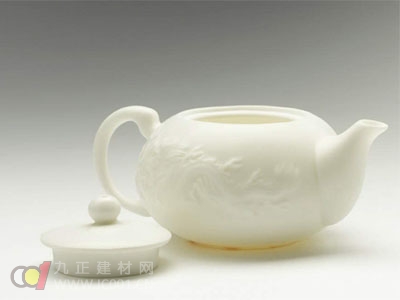White porcelain glaze features:
White glaze : White glaze is the natural glaze of porcelain. Generally, porcelain clay and glaze contain more or less iron oxide. After burning, the utensils must show different shades of cyan.
If the iron content in the glaze is less than 0.75%, the white glaze will be burned out. The production of ancient white porcelain is not to add white coloring agent to the glaze, but to select porcelain clay and glaze with less iron content for processing and refining, so as to reduce the iron content to a minimum. In this way, pure white glaze is applied to the white porcelain, and white porcelain with high whiteness can be fired. White glaze appeared in the Northern Dynasties. The white porcelain unearthed from the Tomb of Fanzi in Beiqi is the earliest white porcelain that China has seen so far.
Sweet white glaze : sweet white glaze sweet white is a white glaze created by Yongle kiln. Because many of the Yongle white porcelain products are thin to semi-fetal, they can shine.

On the thin tire surface of the glazed dark flower, applying a white glaze with a warm and jade color gives a feeling of "sweetness", hence the name "sweet white". The successful firing of Jingdezhen sweet white glaze created favorable conditions for the development of Ming Dynasty colored porcelain. In the Ming and Qing Dynasties, the color, multicolored, and pastel colors can only show its vivid colors on the basis of the high achievement of white porcelain. Sweet white glaze was also burned in the Qing Dynasty. Kangxi sweet white glaze has the color of milk powder, white and radiant, no smear, also known as milk white.
Green and white glaze : blue and white glaze is also called shadow green. It is the original creation of Jingdezhen kiln in the middle and early period of the Northern Song Dynasty. The white glaze enamel has low iron content, the glaze color is white and the glaze layer is fine and crystal clear.
Plus the burning quality is very thin, the dark carved pattern on the device, both inside and outside can be seen. On the edge of the pattern, there is a little light cyan, and the rest are almost all white, so it is called blue and white glaze. Some people call it Yingqing, Hidden or Covered. In the Southern Song Dynasty, the method of overheating was used, and the output of blue-white glaze porcelain surged. A southern Qingbai capital was formed centering on Jingdezhen. In addition to Jingdezhen, Anhui, Fujian, Hubei and other places have kiln burning green glazed porcelain. After entering the Yuan Dynasty, the blue and white glaze was slightly blue, and it was not as clear and translucent as the Song Dynasty.
Ivory : The ivory white is the pure white glaze of the Dehua kiln in the Ming Dynasty. Because the content of ferric oxide in the glaze is particularly low, and the content of potassium oxide is not particularly high, and the neutral atmosphere is used in the firing, the glaze color is particularly pure.
From the appearance, the color is bright and bright, and the milkiness is like gelatin; under the light, the glaze is faintly pink or milky white, so it is called white lard and ivory. Europeans also call this glaze color goose down white, Chinese white.
ESandwich Panel Forming Machine
Sandwich Vacuum Packing Machine,Cnc Cold Roll Forming Machine,Cold Roof Sandwich Panel Maing Machine Line
Botou Fada Numerical Control Goffer Tile Machinery Co., Ltd. , http://www.btformingmachine.com